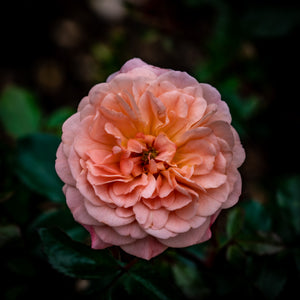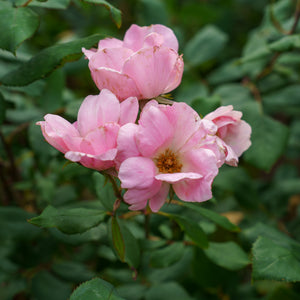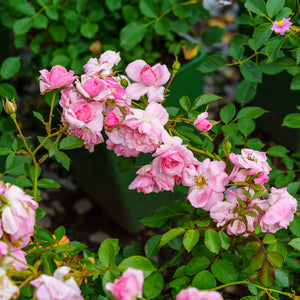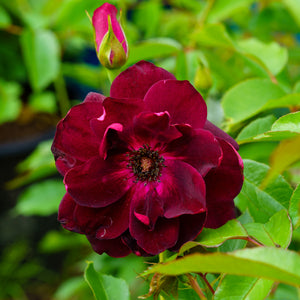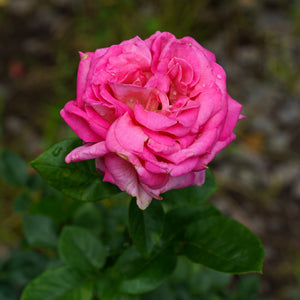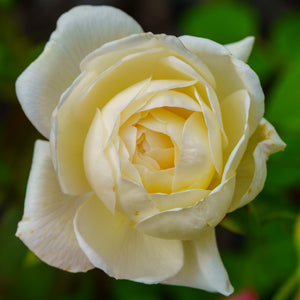The Rose Guide
Roses (Rosa spp.) are among the most cherished flowering plants worldwide, celebrated for their romantic blooms, lush foliage, and broad versatility in garden design. From formal rose gardens to cottage landscapes and mixed borders, roses have long held a place of honor thanks to their remarkable variety, long bloom season, and rich symbolism. With modern breeding advancements, today's roses offer improved disease resistance, compact habits, and extended flowering.
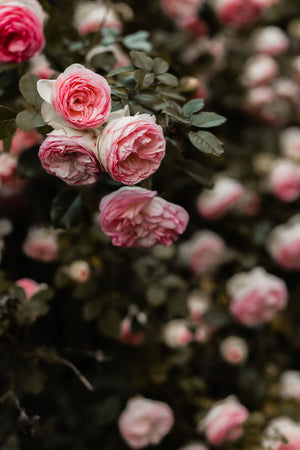
About
The Rosa genus encompasses hundreds of species and thousands of cultivars, ranging from wild shrubs and climbing vines to hybrid teas and groundcovers. Native to Europe, Asia, and North America, roses have been cultivated for thousands of years and continue to be one of the most hybridized plants in horticulture.
Roses are typically classified into several categories:
- Hybrid Tea Roses produce large, singular blooms on long stems, ideal for cutting. Varieties like 'Mister Lincoln' and 'John F. Kennedy' are classic examples.
- Floribunda Roses bear clusters of flowers and have a more compact, bushy habit. 'Cinco de Mayo' and 'Bonica' exemplify this class.
- Grandiflora Roses combine the large flowers of hybrid teas with the blooming habit of floribundas.
- Climbing Roses such as 'Zephrine Drouhin' and 'New Dawn' can be trained over arbors, fences, or trellises.
- Shrub Roses include modern landscape types like the Knock Out series ('Radrazz') and Oso Easy series, prized for low maintenance and repeat blooming.
- Rugosa Roses like Rosa rugosa 'Alba' are extremely hardy, disease-resistant, and salt-tolerant, with a dense, shrubby habit and fragrant blooms.
Roses range in size from compact miniatures under 2 feet to vigorous climbers reaching 10–20 feet. Their colors span the full spectrum, from pure whites and yellows to deep reds, purples, and even multicolored blends. Many cultivars offer a strong fragrance, while others focus on extended bloom time or disease resistance.
Roses thrive in full sun with good air circulation, making them ideal candidates for foundation plantings, borders, containers, and mass displays. With the right selection and care, roses can become the backbone of a perennial garden or a seasonal focal point in mixed plantings.
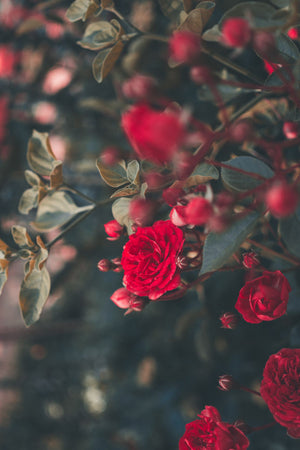
PLANTING
USDA Hardiness Zones: Most roses are hardy in Zones 5–9, though some shrub and rugosa roses can thrive in Zone 3. Heat-tolerant varieties are also available for warmer zones.
Soil: Rich, loamy, well-drained soil with a slightly acidic pH (6.0–6.5) is ideal.
Sunlight: Full sun (6–8 hours daily) is essential for healthy blooms and disease prevention.
Watering: Keep soil evenly moist during establishment. Mature plants need about 1 inch of water per week, ideally applied at the base to reduce fungal disease.
Spacing: Space roses 2 to 5 feet apart depending on mature size and airflow needs. Climbing types require structural support.
Planting Time: Early spring after frost or in fall with enough time for roots to establish before winter.
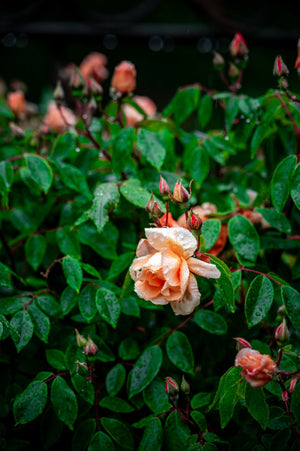
CARE
Watering: Water deeply at the base once or twice a week, especially during dry periods. Avoid overhead watering to reduce black spot and mildew.
Fertilizing: Feed roses with a balanced fertilizer or rose-specific blend in early spring, then again after the first bloom cycle. Stop fertilizing 6–8 weeks before first frost.
Pruning: Prune roses in late winter or early spring before new growth. Remove dead or diseased canes and shape for airflow and structure. Repeat bloomers benefit from deadheading throughout the season.
Pests and Diseases: Common issues include aphids, black spot, powdery mildew, and Japanese beetles. Choose resistant cultivars when possible and monitor regularly.
Mulching: Apply a 2–3 inch mulch layer to retain moisture and suppress weeds, keeping it a few inches from the stem.
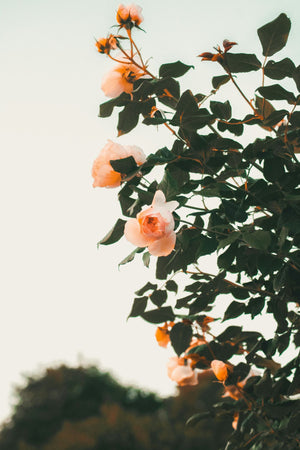
HOW TO USE
Focal Point Plantings: Large shrub roses such as 'Eustacia Vye' or climbing varieties like 'Golden Showers' serve as breathtaking focal points. Use them to draw attention near entryways, along pathways, or within garden beds that need a vertical or textural anchor.
Accent in Mixed Borders: Roses can be woven into perennial beds and mixed borders for vibrant structure and fragrance. Pair them with hardy companions like lavender, catmint, peonies, and salvia. Their recurring bloom and foliage texture help unify diverse plantings across seasons.
Cottage and Romantic Gardens: English roses and antique cultivars shine in informal designs. Let shrub roses spill into pathways, combine with hollyhocks and delphiniums, and repeat soft colors throughout the garden for a timeless, nostalgic effect.
Climbing Structures: Train climbing roses over arbors, fences, trellises, or pergolas to create vertical interest and garden rooms. Use repeat-blooming climbers for long-season coverage and fragrance.
Mass Plantings and Hedges: Modern shrub roses like the Knock Out and Oso Easy series offer uniformity and reliable blooms, ideal for low hedges, slope coverage, or urban landscapes needing color with minimal maintenance.
Small Spaces and Containers: Dwarf roses and patio varieties such as 'The Fairy' are suited for balcony pots and front stoops. Use upright urns or raised beds for best display and airflow.
Wildlife Gardens: Many roses, particularly species and rugosa types, produce hips that feed birds in winter. Their flowers also attract bees and other pollinators. Integrate them with elderberry, coneflower, or blueberry for added habitat value.
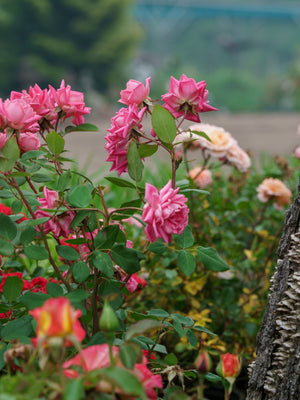
Common Questions
How to prune a rose bush? Use sharp pruners to remove dead, weak, or crossing canes in early spring. Cut just above outward-facing buds to shape the plant.
When to prune a rose bush? Late winter to early spring, just before new growth begins. Avoid pruning in fall.
How to grow cuttings from a rose bush? Take softwood cuttings in spring or early summer. Dip in rooting hormone and plant in moist potting mix, keeping humidity high until rooted.
How to plant a rose bush? Dig a wide hole, amend soil with compost, and plant so the graft union is just below the soil line in cold climates. Water thoroughly.
How to take cuttings from a rose bush? Use 6-inch stem segments with 3–4 leaf nodes. Remove lower leaves and follow propagation method as above.
How to deadhead a rose bush? Cut spent blooms just above the first five-leaflet stem to encourage reblooming.
How to grow a rose bush? Provide sun, well-drained soil, consistent watering, and seasonal fertilization. Prune annually and mulch regularly.
When should you plant a rose bush? Spring or fall, avoiding the hottest and coldest periods.
How to care for rose bushes? Water deeply, feed regularly, prune for health and shape, and monitor for pests and disease.
How to transplant a rose bush? Dig wide to preserve roots, move in early spring or fall, and keep well watered while establishing.
How often to water rose bushes? Weekly during dry spells. Deep watering is preferable to frequent shallow watering.
Do deer eat rose bushes? Yes, deer are known to browse rose foliage and blooms.
Do rabbits eat rose bushes? Occasionally, especially young stems and tender foliage.
Are rose bushes toxic to dogs? The plant is not highly toxic, but thorns can cause injuries and mild digestive upset.
Are rose bushes toxic to cats? Similar to dogs, the main risk is from thorns or mild stomach upset if consumed.
Conclusion
Roses remain a timeless choice for landscapes of all styles. Whether you're planting for fragrance, cutting, structure, or wildlife, there’s a rose suited to the task. With countless cultivars and uses, this classic plant can elevate any garden with color, texture, and enduring charm. When given proper care and attention, roses reward gardeners with seasons of bloom and decades of beauty.
The Rose Collection
Sold Out
Sold Out
Sold Out
Sold Out
Sold Out

